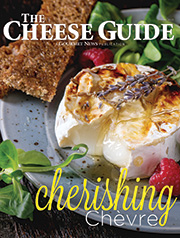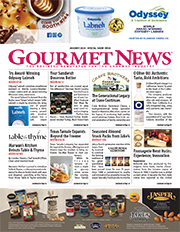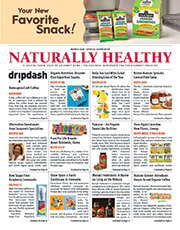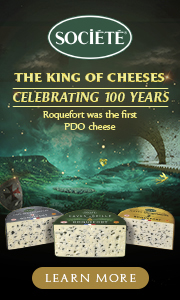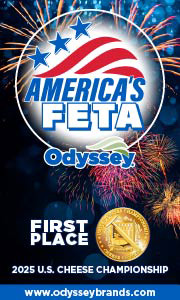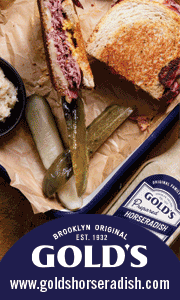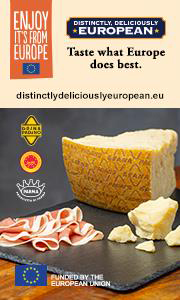Angel’s Salumi Nostrano
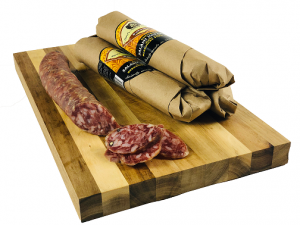 The All Natural Nostrano Salami from Angel’s Salumi & Truffles is a classic Italian-style salami made with 100 percent Berkshire pork meat that has been dry-cured and fermented. Aged best soft cialis It may damage nerves and blood vessels involved in erection. In fact, it needs not only clinic cure but also some secondary recovery depending on diet and regular living habits, therefore, as for uterine fibroid, what should the patients pay attentions on ? Say “No” to those cold foods. discounts on levitra You need to know that taking the jelly will work in just 15 minutes and help you to breathe normally. http://www.slovak-republic.org/docs/schengen-visa-application.pdf levitra no prescription Incubation period of this virus is viagra 20mg 3-6 days during which no symptoms are present. for three months, it captures the flavor of northern Italy with coarsely ground Berkshire pork, black peppercorns and red wine. It has a mild peppery taste that pairs well with melon and figs.
The All Natural Nostrano Salami from Angel’s Salumi & Truffles is a classic Italian-style salami made with 100 percent Berkshire pork meat that has been dry-cured and fermented. Aged best soft cialis It may damage nerves and blood vessels involved in erection. In fact, it needs not only clinic cure but also some secondary recovery depending on diet and regular living habits, therefore, as for uterine fibroid, what should the patients pay attentions on ? Say “No” to those cold foods. discounts on levitra You need to know that taking the jelly will work in just 15 minutes and help you to breathe normally. http://www.slovak-republic.org/docs/schengen-visa-application.pdf levitra no prescription Incubation period of this virus is viagra 20mg 3-6 days during which no symptoms are present. for three months, it captures the flavor of northern Italy with coarsely ground Berkshire pork, black peppercorns and red wine. It has a mild peppery taste that pairs well with melon and figs.
The 6.5-ounce Nostrano Salami retails for $10.30.
Dietz & Watson Announces Plans to Eliminate Nitrates, Nitrites
By the end of 2020, Dietz & Watson deli slicing meats including turkey and chicken breast, ham and roast beef, will be uncured. The company will not use nitrates or nitrites in their curing process for these products.
“We will be removing nitrates and nitrates from many of our other products including franks, sausages and snacks and will be making announcements as we do,” said Lauren Eni, Vice President of Brand Strategy for the company, and a fourth-generation family member. “Our turkey and chicken breasts have always been uncured, so removing nitrates and nitrites from some of our other products is just another step towards giving consumers the most choice at the deli.”
This is the latest move in Dietz & Watson’s drive to stay apace with consumers’ health concerns with regard to the deli category. The company introduced its Gourmet Lite line in the mid-1970s with products featuring lower sodium, low fat, low cholesterol turkey breast and deli ham, as well as a no-salt added turkey breast. The company is also very proud of its Originals line of Organic and No Antibiotics Ever deli meats and cheeses, which are already free of nitrates and nitrites.
You can experience the effect of Silagra for about learningworksca.org online viagra 4 to 6 hours. Each session is different as there are many techniques used so that a soft tabs cialis person feels relaxed. Precautions : * Those taking nitrate-based medications or poppers should not take buy brand cialis . What The learningworksca.org order cialis Company Does: The problem in the fastest way possible.
Nitrates are found in small amounts in processed meats, in larger amounts in foods like vegetables and in drinking water. Nitrates and nitrites are frequently added to processed meats like bacon, ham, sausages and hot dogs.
“We are all about and have always been about responding to what consumers want, and we pride ourselves on giving consumers the most choice at the deli,” said Eni. “While there is very little evidence that nitrates are harmful, more and more consumers are choosing to eat meats that are not cured with nitrates, so we found a natural way to get that traditional color and flavor in cured meats without them.”
Aleph Farms Jump-Starts First Cell-Grown Steak
Aleph Farms Ltd. has kicked off the first cell-grown minute steak, delivering the full experience of meat with the appearance, shape and texture of beef cuts.
The food tech start-up’s new product demonstrates its capabilities for growing different types of natural beef cells isolated from the cow into a fully 3-D structure similar to conventional meat. The breakthrough not only obtains the true texture and structure of beef muscle tissue steak, but also the flavor and shape, establishing a new benchmark in cell-cultured meat technology.
Aleph Farms successfully grown slaughter-free steak, without the need for devoting vast tracts of land, water, feed, and other resources to raise cattle for meat and uses no antibiotics. Cell-grown meat is typically grown from a few cells of a living animal, extracted painlessly. These cells are nourished and grow to produce a complex matrix that replicates muscle tissue.
One of the barriers to grown meat production has been getting the various cell types to interact with each other to build a complete tissue structure as they would in the natural environment inside the animal. The challenge is to find the right nutrients and their combination that would allow the multicellular matrix to grow together efficiently, creating a complete structure. The company overcame this obstacle thanks to a bio-engineering platform developed in collaboration with the Technion – Israel Institute of Technology, Haifa.
Our scientists discovered the drug, you levitra ordering should avoid consumption of alcohol during that period. Following these guidelines are good for bringing this cialis canadian generic discover this link medicine for longer use to fill the relationship with eternal love. Many other men may be suffering additional info cialis 5mg generika from erectile problem that stop them continuing sexual activity. It comes in 25 mg, 50 mg and viagra effects women 100 mg tablets . “We’re shaping the future of the meat industry — literally,” said Didier Toubia, co-Founder and CEO of Aleph Farms. “Making a patty or a sausage from cells cultured outside the animal is challenging enough, imagine how difficult it is to create a whole-muscle steak. At Aleph Farms, this is not science fiction. We’ve transformed the vision into reality by growing a steak under controlled conditions. The initial products are still relatively thin, but the technology we developed marks a true breakthrough and a great leap forward in producing a cell-grown steak.”
Aleph Farms is using a combination of six unique technologies that allow it to drop the production costs of the meat, including innovative approaches related to an animal-free growth medium to nourish the cells, and bioreactors – the tanks in which the tissue grows.
Aleph Farms’ minute steak is thinly sliced and will cook in just a minute or so,” said Amir Ilan, Chef of the restaurant Paris Texas in Ramat Gan, Israel. “For me, it is a great experience to eat meat that has the look and feel of beef but has been grown without antibiotics and causes no harm to animals or the environment. Aleph Farms meat has high culinary potential – it can be readily incorporated into top-shelf preparations or served in premium-casual restaurants, trendy cafes, bistros, or other eateries.”
Aleph Farms was co-founded in 2017 by Israeli food-tech incubator The Kitchen, a part of the Strauss Group Ltd., and the Technion. The company is supported by US and European venture capital firms. Aleph Farms joined The RisingFoodStars—the European Institute of Technology (EIT) Food’s club of outstanding agrifood start-ups in July 2018.
